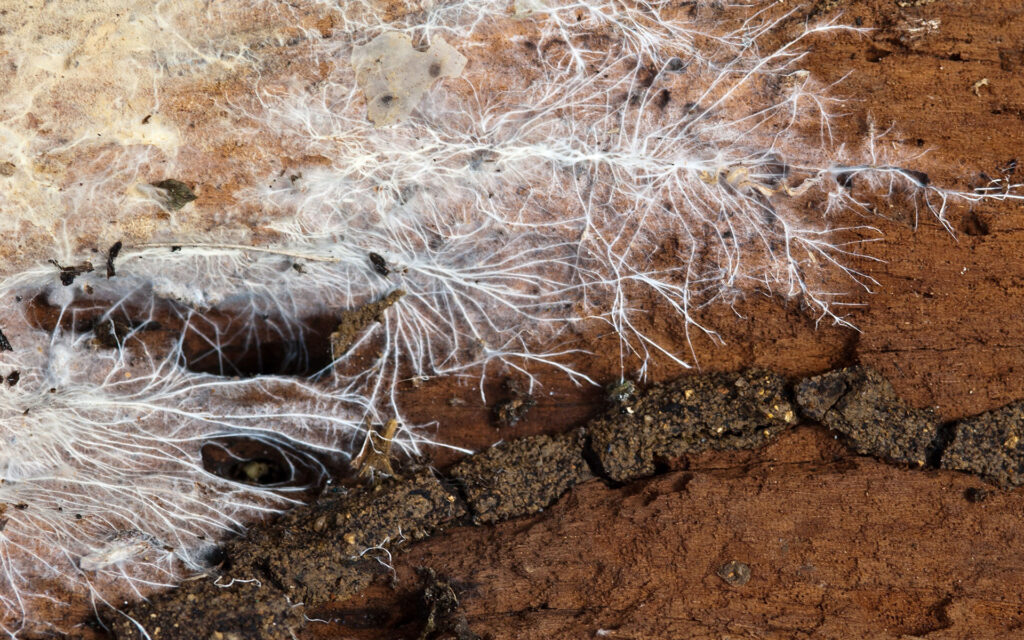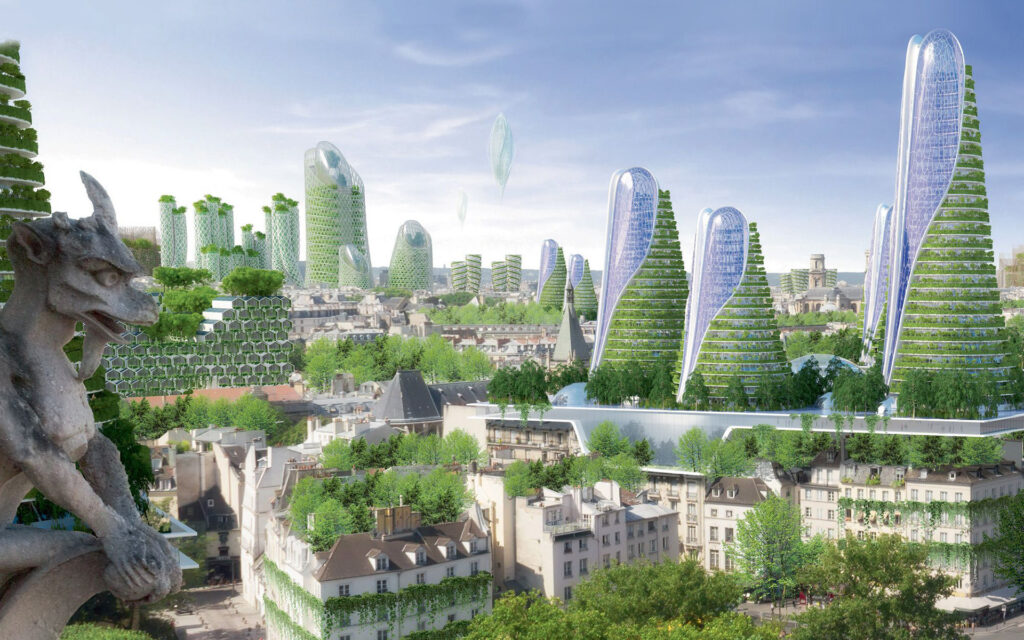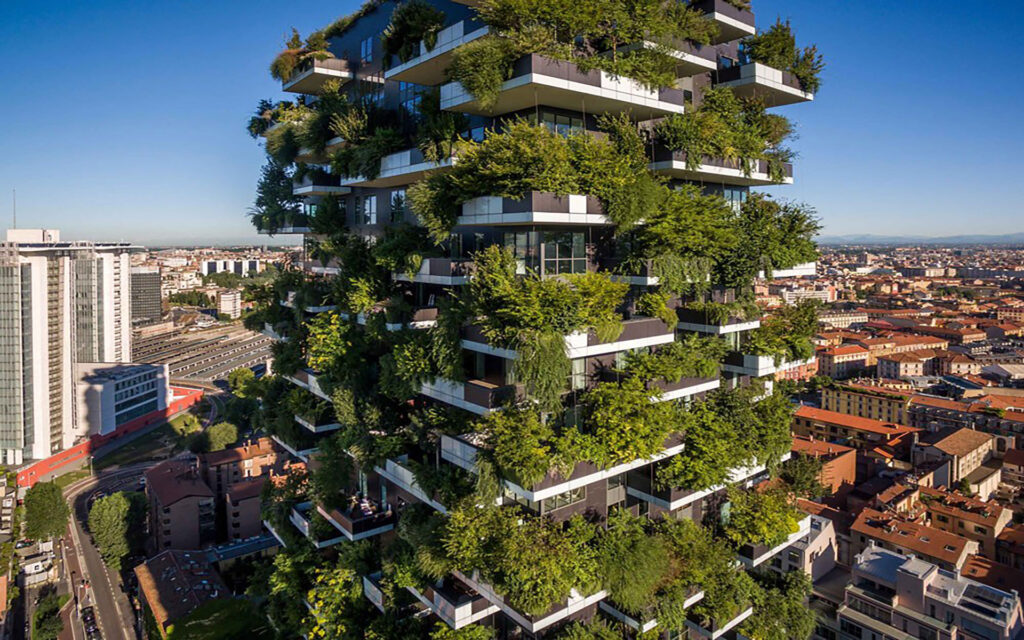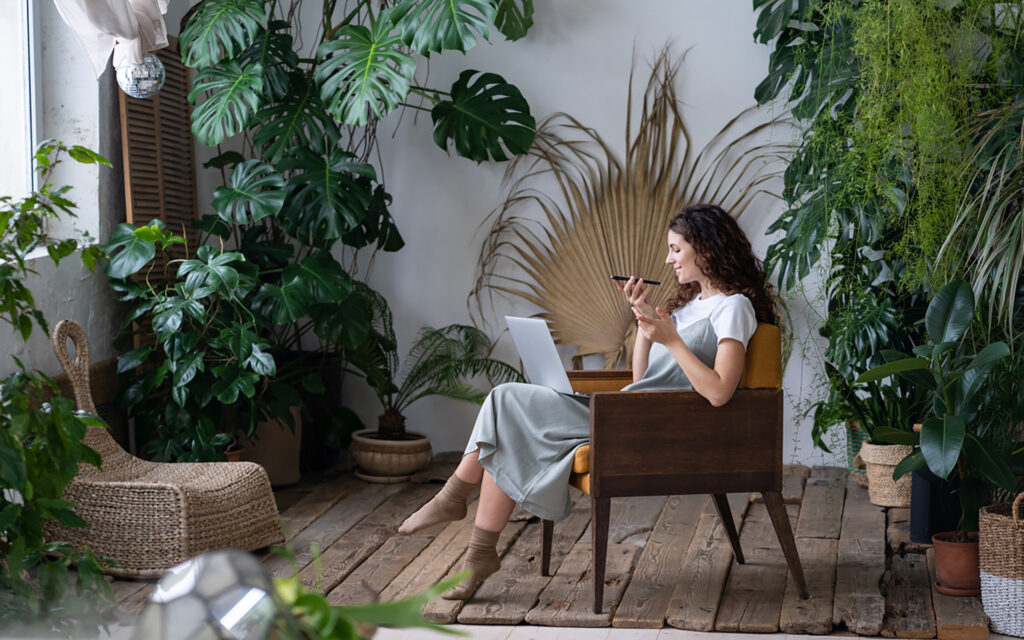We all understand this: nature is becoming increasingly important in built environments (urban and non-urban). It becomes strategic to embrace, take care and increase the presence of nature in the city. Just remember that according to some estimates, by 2050, 70% of the world’s population will live in large urban complexes that will be metropolises and megacities. And they will concentrate within them a huge number of individuals, activities, infrastructures. This complex, in order to be sustainable, should resolutely embrace nature. The coexistence with nature in urban areas is essential for healthy living, but also for stimulating creativity.
Plant-based materials
In dense cities, the concrete and the steel remain prevalent although the use of plant-based building materials continues to grow. We need to be optimistic. Bio-based building materials exist. And they are able, for example, to store CO2 as hemp or mycelium do. They offer a solution. Mycelium, for instance, with its filamentous root structure, can be grown in the substrate and treated to take a wide variety of forms.

The intelligence of nature
Biohm, a biotechnology company, has produced a mycelium insulation board that has the potential to become the world’s first accredited insulation product of its kind. The biggest obstacle to the change, is not regulatory or cost-related. It depends on the change in people’s consciousness. Biohm’s design director, Oksana Bondar, believes that modern and refined design can only be implemented in collaboration with the natural world. In the case of mycelium insulation board, production waste from other industrial production can be used. They can be treated and recycled, and also serve as CO2 “sinks“. In addition, biomimetics techniques offer enormous potential in devising materials for building.
Oksana Bondar affirms: “We have achieved great technological achievements, but we still have so much ground to cover in terms of matching nature’s intelligence. Let’s work together to create healthier and more sustainable urban environments.”

We have achieved great technological achievements, but we still have so much ground to cover in terms of matching nature’s intelligence. Let’s work together to create healthier and more sustainable urban environments.
Biophilic design
In a world where urbanization and technology have become increasingly prevalent, it is easy to forget our innate connection with the natural world. However, biophilic design reminds us that our well-being, productivity and happiness, in general, are intimately welded to nature.
Through biophilic design we seek to create spaces that incorporate elements of nature by predisposing natural systems, stimulating our senses. Above all, promoting a deep perception of well-being. It is about bringing the ecosystem up to the interior of the building through the use of natural materials, but also with the integration of plants by skillfully using natural light and landscape.

Design philosophy
It is a real design philosophy that is gaining momentum in the minds of designers and in the built spaces that they create in a world urbanized to the hilt. Artificial and technological. It is easy to forget our innate connection with the natural universe. However, biophilic design regenerates the feeling of well-being by connecting it with the richness of nature, its wisdom and intelligence and even its productivity. And gratification, in general, is really related to the relationship with nature.
Health and Wellness
This has a profound impact on health and well-being. Numerous studies have shown that exposure to the natural environment, even in small doses, can reduce stress levels. It can boost cognitive function and improve overall mood.
By incorporating biophilic design principles into workplaces, homes and public spaces, our habitat becomes a foundation for physical and mental health.

Productivity and creativity
In addition, biophilic design has been shown to improve productivity and creativity. Through natural “materials” and living forms we tap into our deep connection with nature by bringing it into an excellent concentration, a more effective application, and a more productive capacity for innovation. Whether it is a vegetation wall or natural ventilation systems or even the presence of water, these are all elements that inspire and fuel inventiveness.
Environmental benefits
In addition, biophilic design has immense benefits for the environment. It can help minimize the ecological footprint. It can create spaces that harmonize with the ecosystem. A biophilic design allows us to reduce energy consumption. It allows air quality to be improved. It promotes biodiversity in urban areas, which is a key component of sustainability.
Embracing biophilic design is really embracing nature, integrating it into architecture and urban design.
The future of the built environment can be mold by the way you shape a natural landscape.
The city is transformed into a nature sanctuary. That it knows how to improve the well-being of those who live there and at the same time nourish the planet. A world in which people and nature coexist harmoniously.
To learn more: BIOHM Regenerative Biotechnologies
You may be interested in: New materials failing to thrive in the fashion industry





